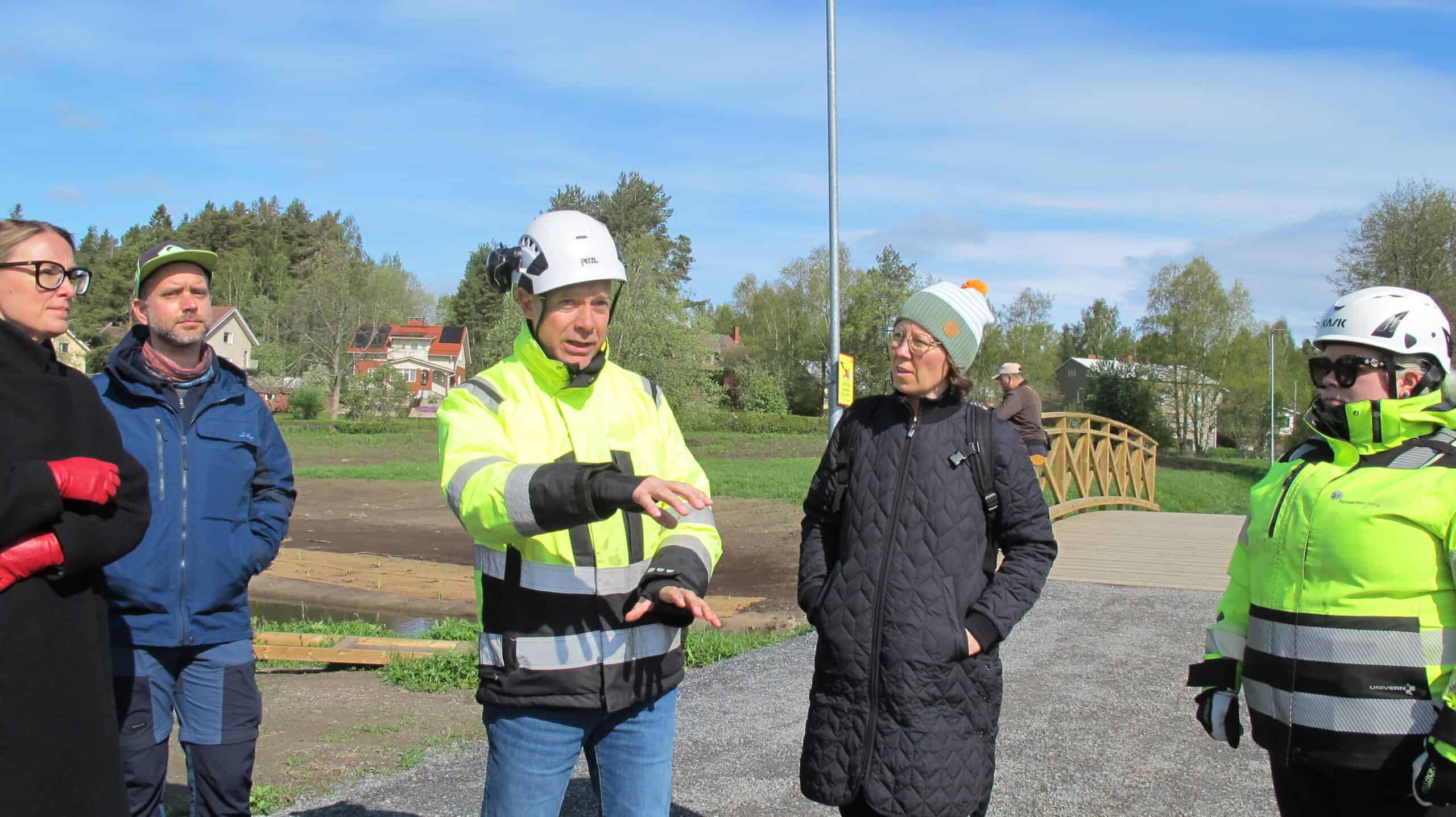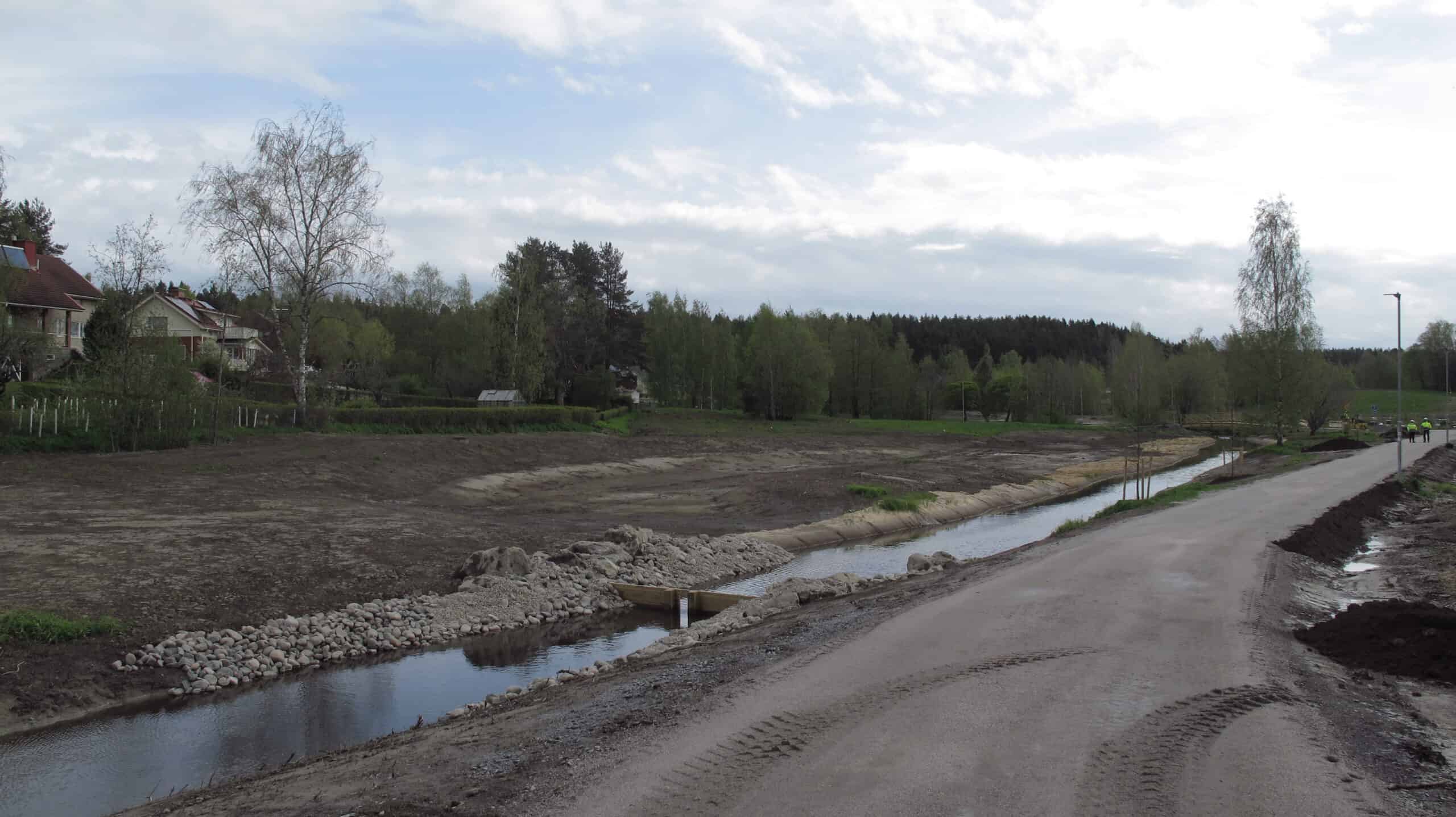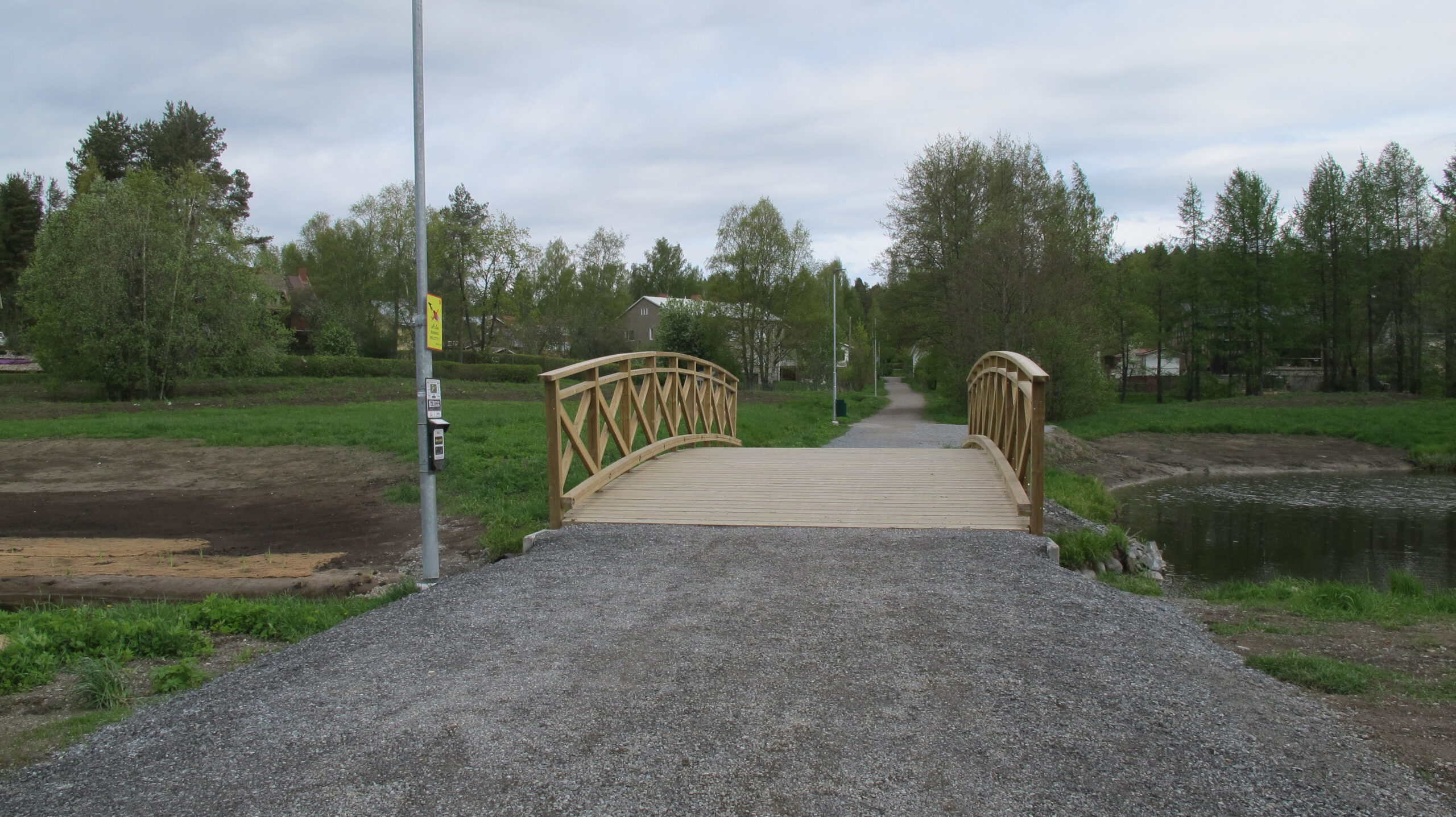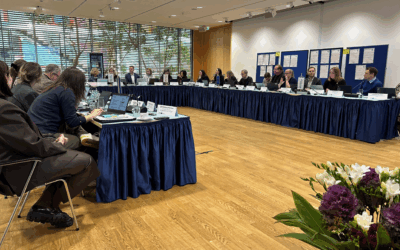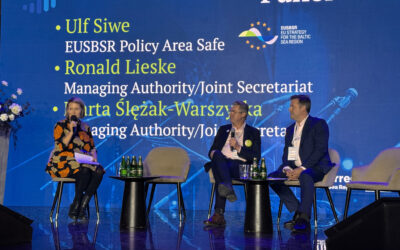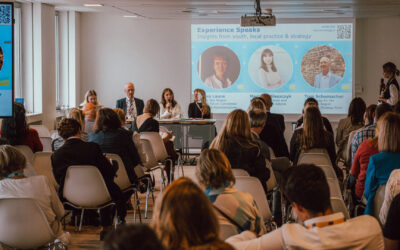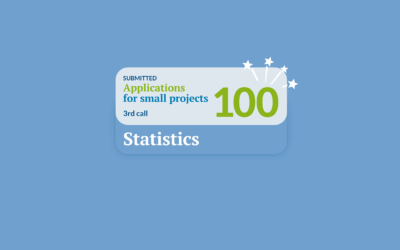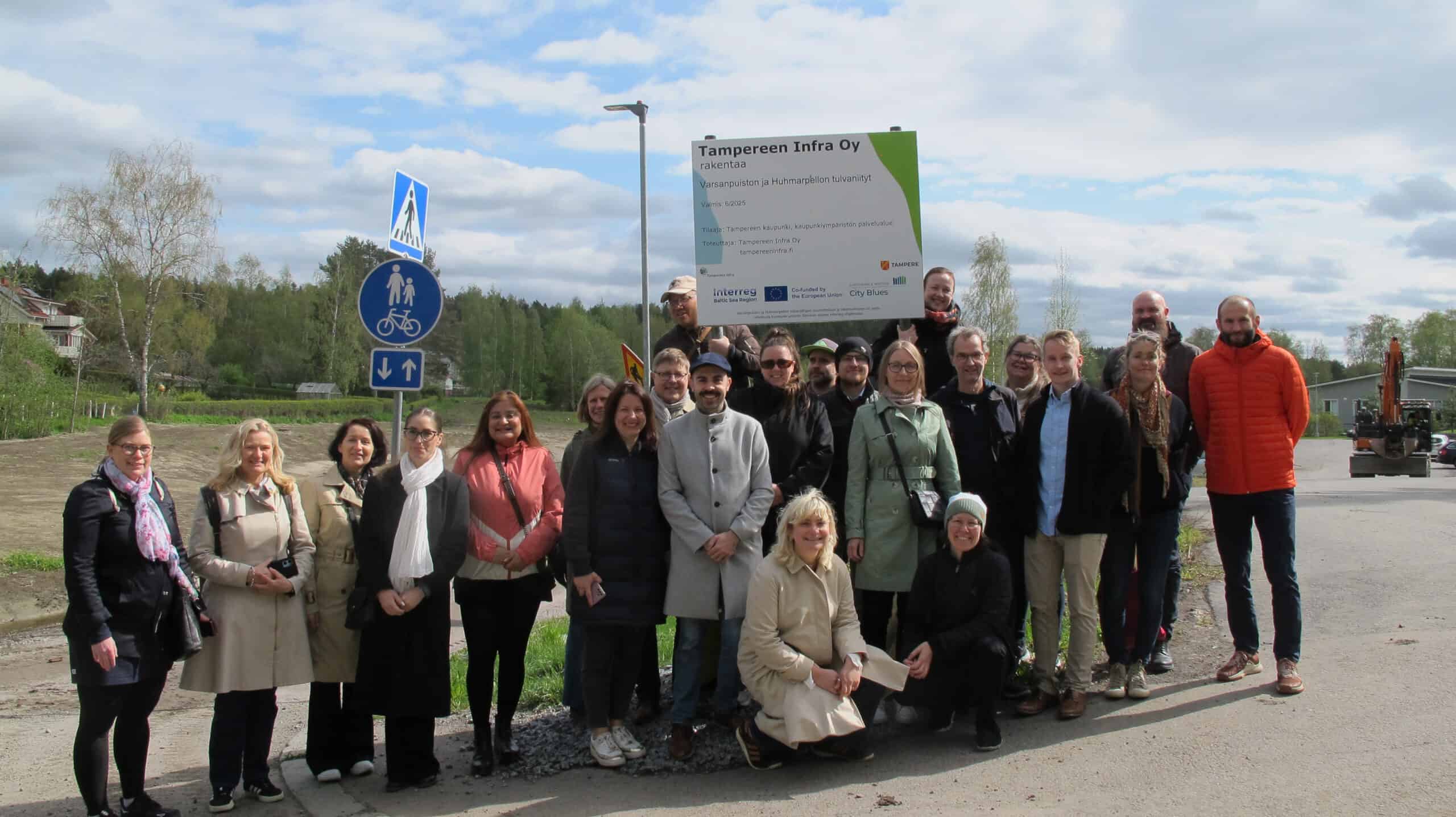
24 June 2025
Painting the Baltic Sea region cities blue
written by susie hacquin
#DidYouKnow
Nature-based solutions are multifunctional and cost-effective actions to address societal challenges by protecting, developing or restoring ecosystems while promoting biodiversity and human well-being at the same time.
Walking along the stream to learn about flood risk management
A big sign reading ‘City Blues project’ welcomed us as we stepped off the bus to discover the first pilot site. It was large area with a road following the stream in front of us. Left of the stream was a grass area with some trees, we could see a bench and two bridges in the distance. Janne Syrjä, a developer of green areas for the city of Tampere explained to us the challenge affecting the catchment area of the stream: flooding caused by increased rainfall. What did the project do to address it? The project focused on slowing down the flow of water. They expanded the area around the stream to give it more space by constructing new alluvial meadows and built a swirl pond designed to delay the water’s movement. This clever solution allows solids and nutrients to settle, and preventing them from flowing further downstream. As we walked along the stream on a newly widened path, we saw the swirl pond up close and passed by a newly built bridge, both part of this nature-based pilot that blends infrastructure with ecological thinking.
Click on the photo to view the gallery
Citizen participation: locals in the loop
But beyond infrastructure, the project took into consideration the opinion of the people living in the area.
Anna Vilhula, City Blues project manager
Anna Vilhula, City Blues project manager
Protecting the biodiversity
Emmi Seppänen, a representative from the non-governmental organisation Wild Zone, an associated partner in the City Blues project, also joined the visit. She explained how biodiversity protection had been integrated into the project from the very beginning.
Anna Vilhula, City Blues project manager
Wild Zone contributed to the different phases of the project by providing their expertise on using local seeds and plants. The local seeds, hand-collected by Wild Zone members within a 20 km radius, were carefully selected for their resilience to temporary submersion, which is essential in such an area. They also prioritised rare species to boost diversity. As part of the city’s tree experiment, tree species adapted to current and future site conditions were introduced in the pilot zone. The idea was to anticipate the effects of climate change and global warming and select those tree species which might survive in future conditions. The selected trees originated from the southern parts of Europe and North America, and depending on how well the trees would take root and adapt, the insights gained could guide future tree planting strategies in Tampere. It was very interesting to learn about this aspect of the pilot activity.
The magic of transnational cooperation
This joint effort between the city of Tampere and Wild Zone already embodies the spirit of cooperation, but there is more to it. Through the five different pilots in Finland, Sweden, Estonia, Norway and Denmark, each with different approaches due to the diverse local conditions, partners learn from and inspire each other. Anna Vilhula gave us a compelling example: the partner city of Tartu had initial doubts about the effectiveness of nature-based solutions in colder climates. Through the pilot, the city of Tampere proves this is possible and shares their best practices. Project visits like this one also create great opportunities to build synergies between projects. Project manager Sanna Varis and communication manager Rozabela Singh from the BALTFLOODS projects were among the visitors particularly interested in the City Blues pilots. Since BALTFLOODS also addresses challenges related to flooding and stormwater discharge around the Baltic Sea, the study visit was a chance for Sanna Varis to discover nature-based solutions in action but also potentially laying the foundation for future joint efforts of the two projects.
Sanna Varis, BALTFLOODS project manager
Personal takeaways
This study visit offered participants far more than just a glimpse of nature-based solutions in action: it offered a tangible experience of how cities can turn climate challenges into opportunities for cooperation towards urban resilience. Engaging directly with the partners behind City Blues and witnessing their work on the ground brought the project’s vision, complexity, and local impact vividly to life. As project manager Anna Vilhula put it: “We want to make nature-based solutions become mainstream for stormwater management and for cities” Serving as the final stop of the Programme Conference 2025, this visit perfectly captured the spirit of the entire event and the magic of Interreg: turning shared challenges into shared solutions through cooperation, building bridges across borders.
Don’t miss!
More recent news
Monitoring the Programme’s progress: transnational cooperation in the making
Representatives from nine Programme area countries gathered in Berlin on 19-20 November 2025 to review the progress of the Programme’s implementation and start preparing for the post-2027 period.
Beyond Borders: Turning Interreg Results into Policy Action
At this year’s EUSBSR Annual Forum in Sopot, the session “Beyond Borders: Interreg Results in Action for a Resilient and Safe Baltic Sea Region” showcased how Interreg Baltic Sea Region projects are transforming challenges into policy-relevant results that strengthen resilience, safety, and cooperation across the region. The session brought together project partners, EUSBSR policy area coordinators, members of the Programme Monitoring Committee and young participants to explore what it takes to turn project outcomes into lasting policy impact.
How territorial cooperation builds us a home: the Baltic Sea region example
A room full of people waving their green and orange cards, prominent panelists on stage, and a clear hero of the day: territorial cooperation, making the Baltic Sea region feel like home. The joint session during this year’s EU Week of Regions and Cities was filled with positive energy, commitment and hopes for the future. What stood out most?
100 project applications: small enough to handle, big enough to matter!
The third call for small projects closed with 100 submitted applications and a whole lot of ambition. From existing challenges to transnational answers, these initiatives are proving that small can be mighty in the Baltic Sea region.



